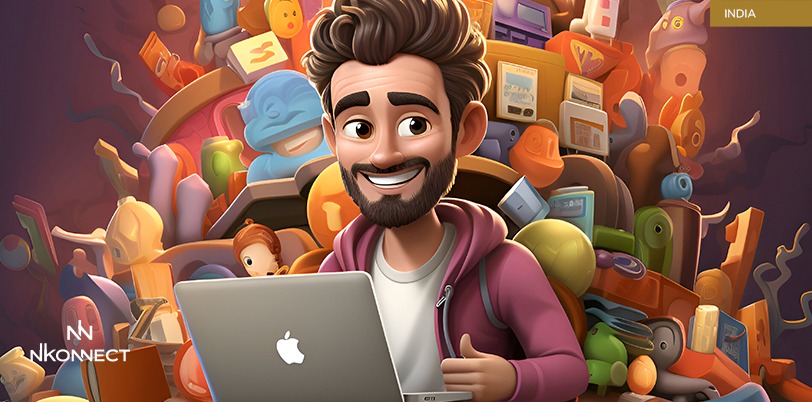How to Build a Strong Portfolio as a Graphic Designer in Dubai


As a graphic designer in Dubai, building a strong portfolio is crucial for attracting clients, securing jobs, and establishing your professional reputation. Dubai’s competitive and multicultural market demands portfolios that not only showcase your technical skills but also your ability to adapt to various cultural contexts and industry needs. Here’s a guide on how to build a standout portfolio that resonates in Dubai’s vibrant design scene.
1. Understand the Market and Your Audience
Know Your Clients: Before you start compiling your portfolio, research the types of clients you want to attract. Are you aiming to work with luxury brands, real estate developers, tech companies, or the hospitality industry? Understanding your target market will help you tailor your portfolio to meet their specific needs and preferences.
Cultural Sensitivity: Dubai is a melting pot of cultures, and your portfolio should reflect an awareness of this diversity. Incorporate designs that show your ability to work with both Arabic and Western design elements, demonstrating cultural sensitivity and versatility.
2. Showcase a Variety of Skills and Styles
Diverse Projects: Include a range of projects that highlight different aspects of your skill set, such as branding, web design, packaging, typography, and illustration. Diversity in your portfolio will show potential clients that you can handle various design challenges.
Adaptability: Showcase your ability to adapt to different styles and aesthetics. Whether it’s minimalistic, luxurious, modern, or traditional, demonstrating versatility can make you more appealing to a broader range of clients.
3. Highlight Your Best Work
Quality Over Quantity: It’s better to have a few outstanding projects than many mediocre ones. Select your best work that you’re most proud of and that has received positive feedback. Each piece should tell a story of your skills, creativity, and problem-solving abilities.
Detail-Oriented: For each project, provide context. Include a brief description of the client’s needs, your design process, the challenges you faced, and how you addressed them. This will give potential clients insight into your workflow and thought process.
4. Incorporate Real-World Examples
Client Work: Whenever possible, include real client projects. This demonstrates that you have professional experience and can meet clients' expectations. If you’re just starting and don’t have many client projects, consider doing some pro bono work or creating mock projects for well-known brands.
Case Studies: Develop detailed case studies for a few key projects. Include initial concepts, sketches, and final designs, along with the impact of your work on the client’s business. Case studies are powerful tools to showcase your strategic thinking and design effectiveness.
5. Make It Visually Appealing
Professional Presentation: Your portfolio should be visually appealing and professionally presented. Use high-quality images, clean layouts, and consistent typography. Your portfolio itself should be a testament to your design skills.
Interactive Elements: If you’re presenting a digital portfolio, consider adding interactive elements like animations, hover effects, or video walkthroughs of your projects. This can make your portfolio more engaging and memorable.
6. Utilize Online Platforms
Personal Website: Having a personal website is essential. It’s your digital business card and the first point of contact for potential clients. Ensure your website is well-designed, easy to navigate, and optimized for mobile devices.
Portfolio Platforms: Leverage platforms like Behance, Dribbble, and LinkedIn to showcase your work. These platforms not only provide exposure but also connect you with a community of designers and potential clients.
7. Seek Feedback and Iterate
Constructive Criticism: Regularly seek feedback from peers, mentors, and clients. Constructive criticism can help you identify areas for improvement and refine your portfolio.
Continuous Improvement: Keep your portfolio updated with your latest and best work. As you gain more experience and complete new projects, replace older pieces with fresher, more relevant ones.
8. Network and Promote Your Portfolio
Networking Events: Attend industry events, workshops, and meetups in Dubai to network with potential clients and other designers. Personal connections can often lead to job opportunities and collaborations.
Social Media: Promote your portfolio on social media platforms. Share snippets of your work, behind-the-scenes processes, and success stories to attract attention and drive traffic to your portfolio.
Conclusion
Building a strong portfolio as a graphic designer in Dubai requires a strategic approach, cultural awareness, and a commitment to showcasing your best work. By understanding your audience, highlighting a diverse range of skills, and continuously refining your portfolio, you can create a compelling showcase that attracts clients and sets you apart in the competitive market of Dubai. Remember, your portfolio is not just a collection of your work; it’s a reflection of your brand, professionalism, and creative journey.
“nKonnect for Cards & Ads is the best team in Dubai for Digital Google Review Cards using NFC, Digital Business Cards, Logo Design, Corporate Profiles, Trademark Registration, Business Setup, Visa Services, Translation, Website Design, Instagram Followers and Printing Services. Easily Whatsapp at +971 50 157 9600”


